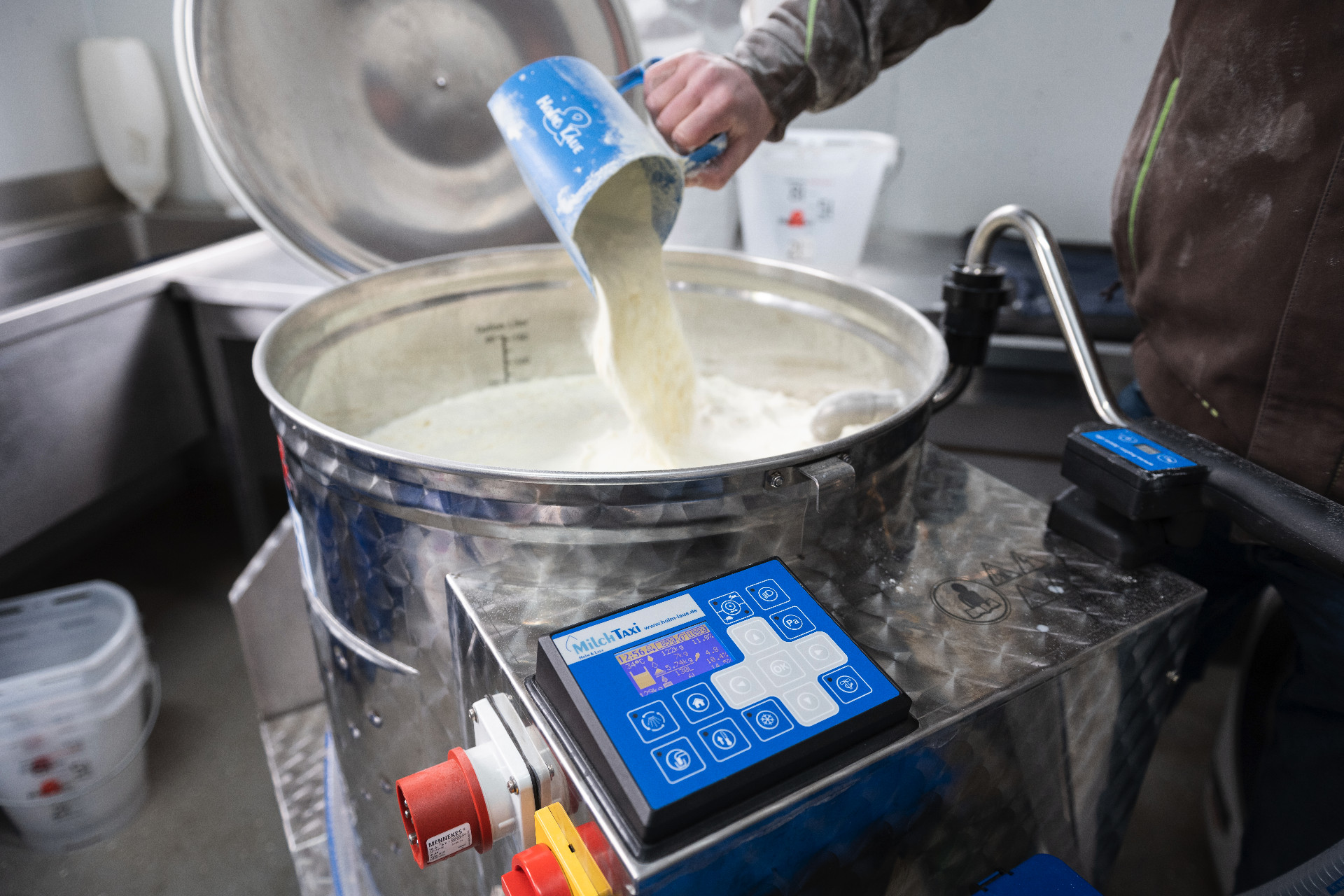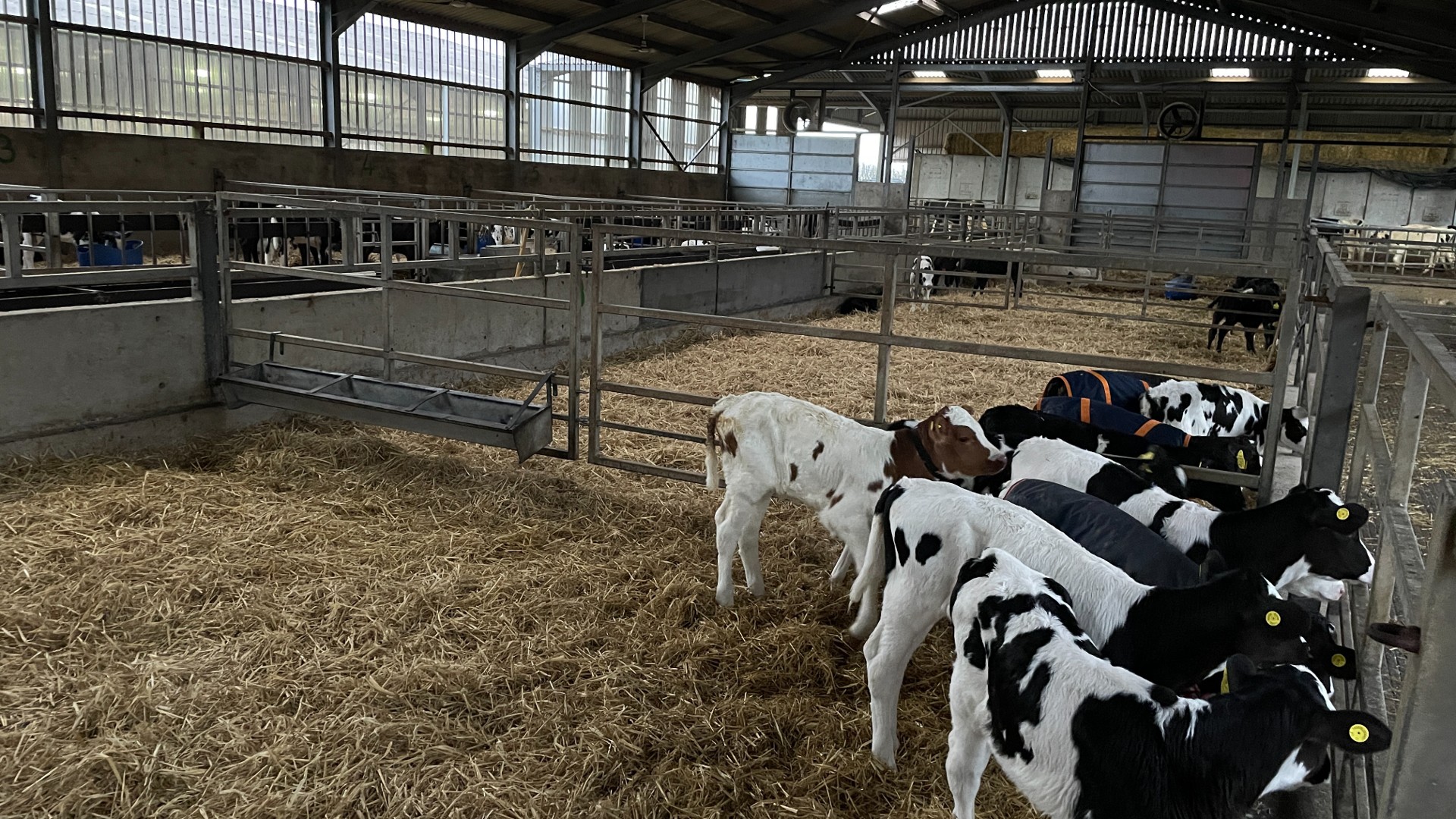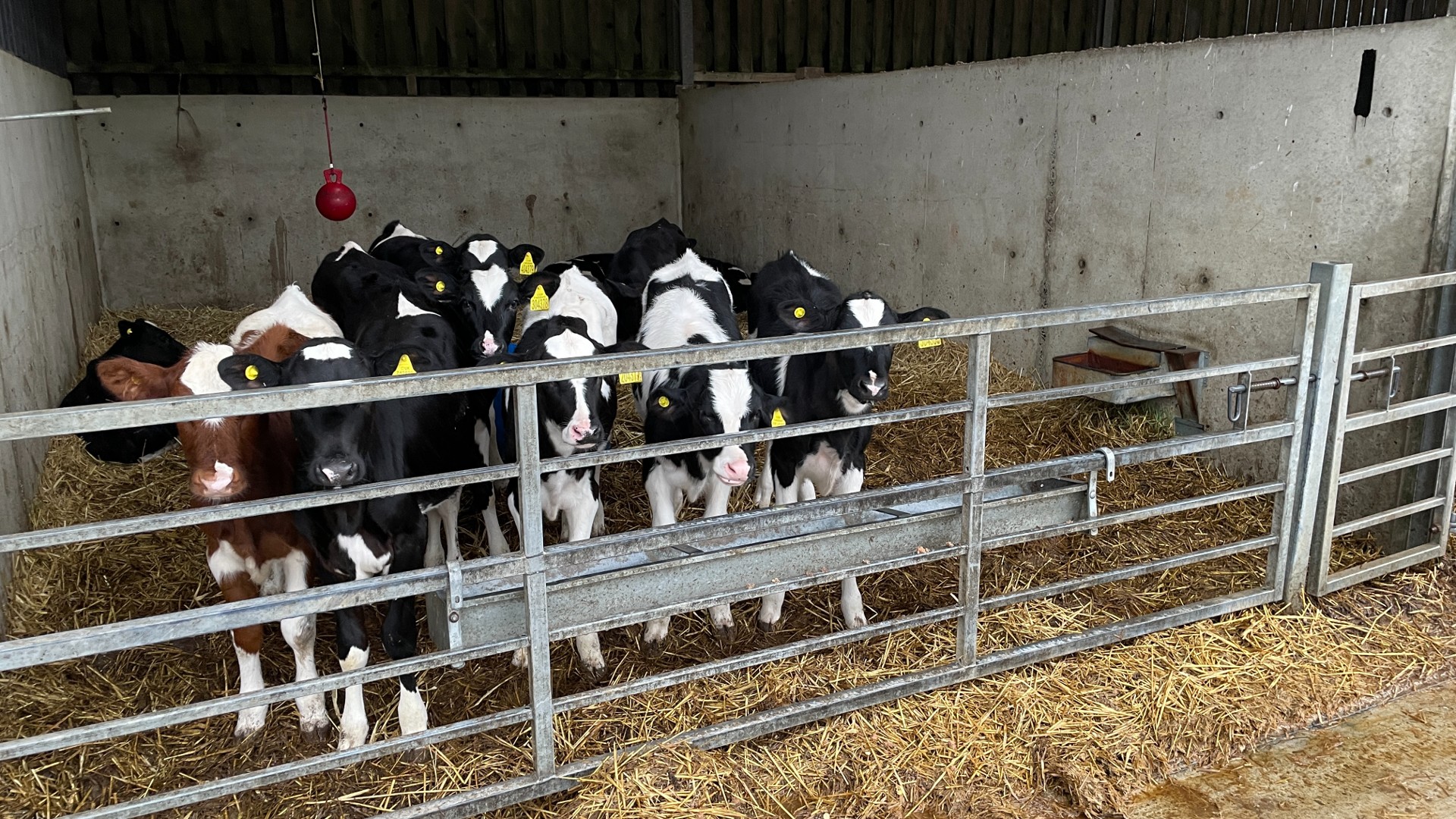Calf rearing with seasonal calving
10. Mai 2024 — Calf Feeding, Calf Husbandry — #Work management #Great Britain #Group housing #MilkTaxi #NativeCalfConcept #Animal weighing scalesMarc and Lucy Allison at Sychpant Farm near Cardigan, Wales, milk 300 cows during the seasonal autumn calving (milking routine = 3×/day).
As they have opted for block calving, they need to feed 190 calves at a time during peak periods. Lucy tells us that feeding her calves has become much easier since she purchased her 260 litre MilkTaxi, which she is now using for a second season. Previously she used to have a 160 litre tank without a heating element.
This article is about
SmartMix simplifies the task of mixing calf milk
Her brand new MilkTaxi has both the heating option and the SmartMix feature. SmartMix helps to calculate the mix she wishes to feed. Lucy Allison is very happy with this function as she no longer has to write things down or remember a whole host of things. All she has to think about is: "What is the total volume I need?" and then the MilkTaxi does all the work, such as calculating the required amount of powder and water, heating the milk to the right temperature, etc.
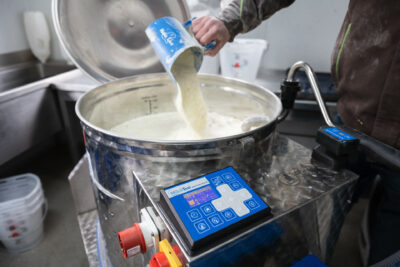
Given that two different powders with two separate calf groups are used for fattening and dairy cattle rearing, manual mixing would be even more complicated, but with SmartMix it is now so easy. It is also possible to add surplus whole milk to the mixture. However, the amount of whole milk available varies from feeding to feeding with three milkings and only two feedings a day. SmartMix now makes it easy for everyone on the farm to calculate the right mix.
Group housing directly after birth
Calves are given a provisional collar to identify them immediately after birth. It helps to identify each calf when the calves are marked with the live ear tag after two days.
Calves on Rosehill Farm are kept in groups of 12 heifer calves or 10 veal calves. This is due to the different sizes of bays. They are assigned to these groups immediately after birth. Each calf has its own character. As they are fed with group teat bucket feeders, there is a risk that stronger calves will drink more quickly. This is why it is necessary to have a good eye for the calves.
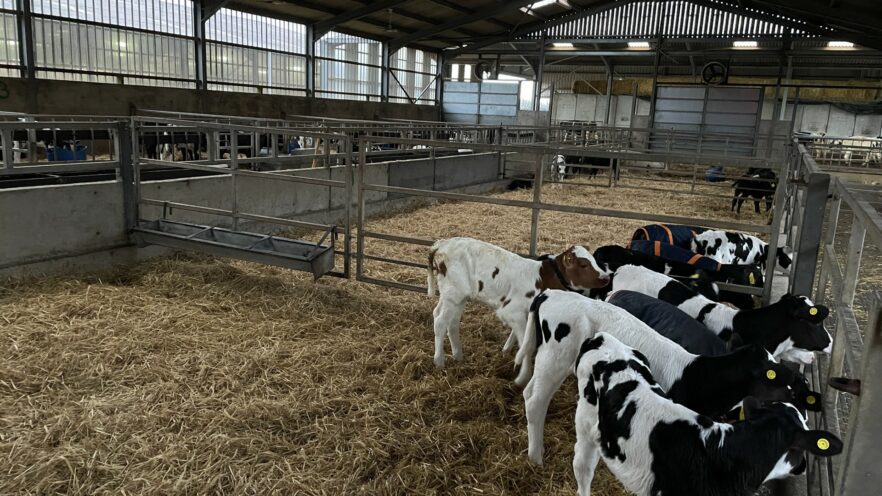
Calves need a regular routine
The calves are given whole milk for four days and are then switched over to powdered milk or – as mentioned above – a mixture of powder and whole milk. Lucy's experience shows that calves need a regular routine, i.e. they need to be fed at the same time every day, at the same temperature and with the same mixture. They then grow into strong, healthy animals.
In the past, Lucy fed 8 litres a day to heifers. During the weaning phase, however, the calves did not eat concentrates so well because they were so used to milk. She therefore changed the daily diet to 6 litres and now her calves consume concentrates much earlier in the rearing process.
The weaning process at Rosehill Farm takes two weeks: it begins on day 56, when the amount of milk is reduced to 4 litres, moves on to one feed per day and the calves are fully weaned by day 70.
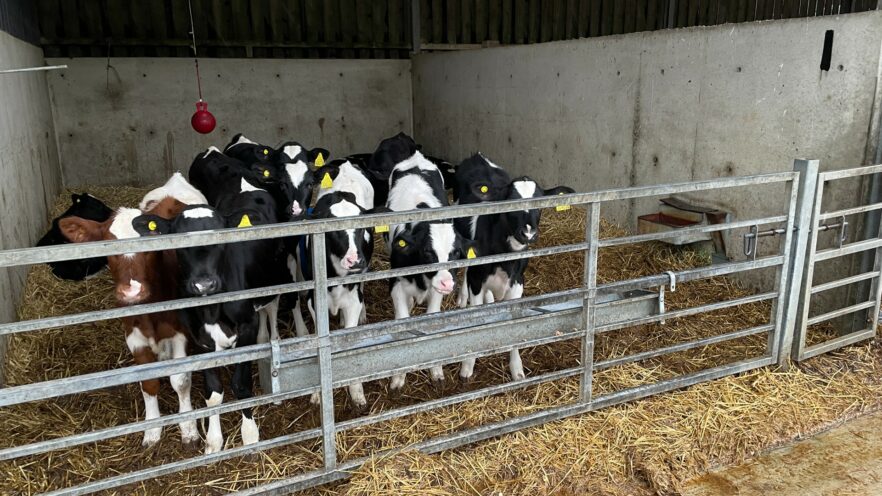
A new calf barn is being planned
Calf rearing is a hot topic for Lucy. The Allisons have two different housing systems for their calves. The one for calves for fattening is somewhat more exposed with an open front barn. It's great in summer, but bedding and even dry food get wet in the rainy season. The building for the female calves is more sheltered, with plenty of airy space, but it still needs to be ventilated at certain times. Lucy is reasonably happy with the barn situation, but neither system is 100% perfect. This is why Marc and Lucy are thinking about the possibility of building a customised structure for their calves. And perhaps automatic feeding might be an option. They are still working out how best to rear their calves in the future. However, the farm does not have calves for six months of the year due to block calving, which is why any investments in calf rearing equipment need careful consideration.
Weighing is important!
Weighing calves is another major issue on the farm. The Allison family owns a platform weigh scale and weighs their animals every fortnight. The calves are not weaned until they weigh 80 kg and Lucy can see that they have an average daily weight gain of 0.7 to 0.8 kg. She also plans to take a closer look at the weighing lists in the near future – who knows, maybe there is potential for even larger daily weight gains.

